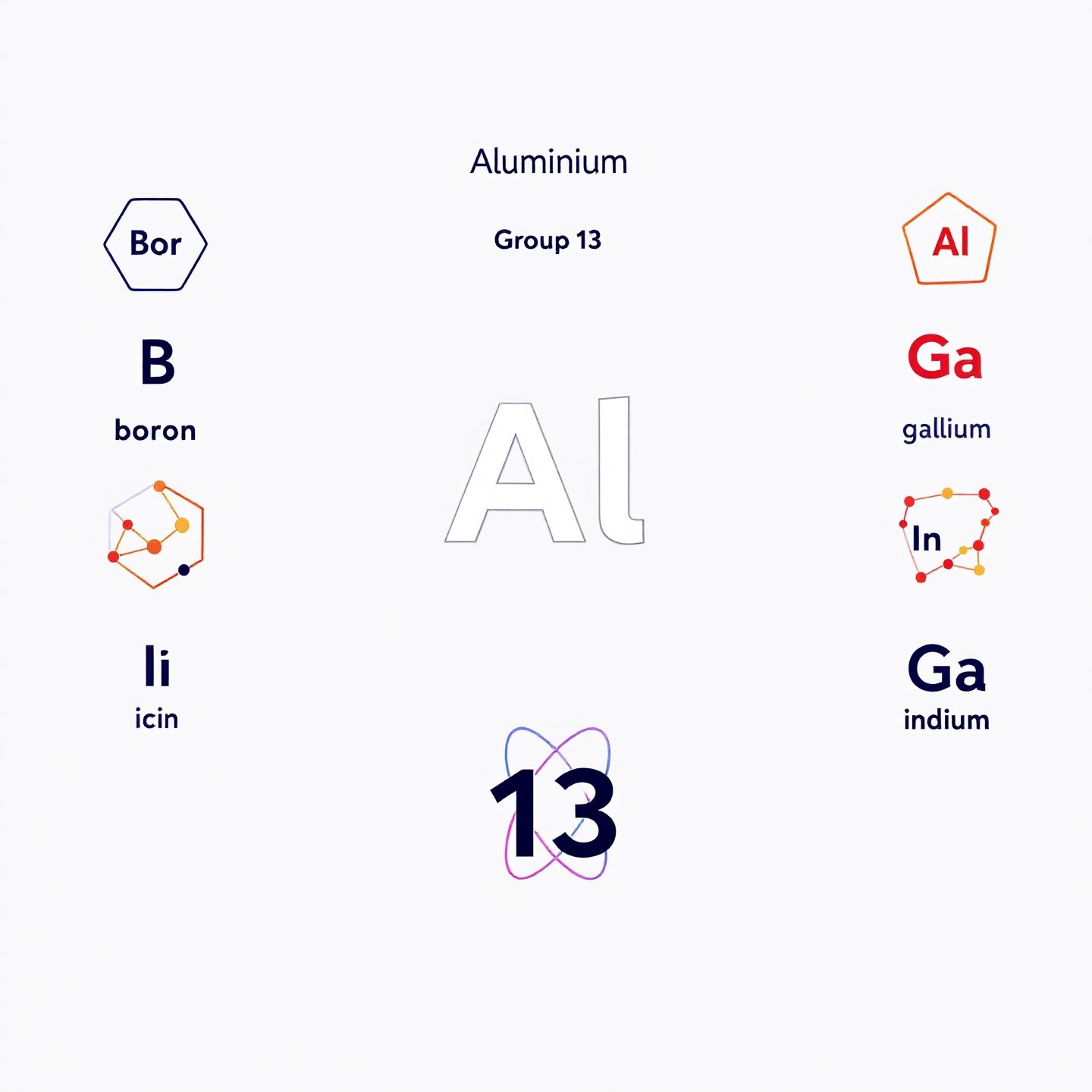
Is aluminum a metal? According to Virginia Energy, aluminum is classified as a critical mineral—a categorization reserved for metallic elements vital to economic and technological advancement. This silvery-white material exhibits three hallmark aluminum metal properties that confirm its metallic nature:
Accounting for 8.23% of Earth's crust by weight, aluminum ranks as the third most abundant element after oxygen and silicon, according to geochemical surveys. Despite its prevalence, debates persist about its classification. Some mistakenly ask, 'Is aluminum a metalloid?' due to its lightweight nature and corrosion resistance. However, metalloids exhibit mixed metal/non-metal traits—unlike aluminum, which consistently behaves as a true metal.
In this article, we'll resolve these misconceptions while exploring how aluminum's unique characteristics make it indispensable in industries from aerospace to packaging. Let's begin by understanding its foundational role as one of humanity's most versatile metals.

Where does aluminum sit in the periodic table? Aluminum resides in Group 13 (IIIA), nestled between boron and gallium. This group includes elements with three valence electrons, but aluminum’s classification often sparks debate. Let’s clarify why it’s labeled a post-transition metal and resolve the common question: Is aluminum a transition metal?
Transition metals occupy Groups 3–12 and have partially filled d-orbitals. Aluminum, however, lacks d-electrons entirely. Its electron configuration ([Ne] 3s² 3p¹) means it loses three electrons to form a +3 oxidation state—a hallmark of Group 13 elements. Unlike transition metals, aluminum doesn’t exhibit variable valency or colored compounds, key traits of d-block elements.
As a post-transition metal, aluminum shares traits with its Group 13 neighbors:
According to LibreTexts, post-transition metals like aluminum are “electron-rich” compared to classic metals, leading to unique applications in alloys and electronics.
| Element | Atomic Number | Group | Oxidation States |
|---|---|---|---|
| Boron | 5 | 13 | +3 |
| Aluminum | 13 | 13 | +3 |
| Gallium | 31 | 13 | +3, +1* |
*Gallium’s +1 state arises from the inert pair effect, where inner electrons resist bonding. Aluminum’s consistent +3 state reinforces its metallic behavior, unlike boron—a metalloid—or gallium’s dual nature.
This positioning explains aluminum’s role in industries needing lightweight conductivity, from power lines to spacecraft. Next, we’ll explore how its metallic properties translate into real-world applications.
Aluminum’s classification as a metal hinges on three fundamental characteristics shared by all metallic elements. Let’s explore these traits and address common misconceptions about its composition.
When you crumple aluminum foil or snap a soda can, you’re witnessing its malleability. Industrial foil production involves rolling aluminum to 0.006 mm thin—thinner than human hair—as detailed in manufacturing studies. Its ductility allows drawing into wires as thin as 0.005 inches for electrical applications.
Reddit debates often ask, ‘Is aluminum an alloy?’ Here’s the truth:
While alloys dominate industrial use, pure aluminum’s metallic properties remain chemically identical to its elemental form. The difference lies in added materials—not its core classification.
These inherent metallic qualities make aluminum indispensable across industries. Next, we’ll examine how its corrosion resistance sets it apart from iron-based metals.

Why choose aluminum over traditional iron-based metals like steel? The answer lies in two critical advantages: corrosion resistance and weight efficiency. Let's dissect how aluminum outperforms ferrous metals in demanding environments.
Unlike iron, aluminum doesn't rust. When exposed to oxygen, it forms a 2-3nm thick aluminum oxide layer (Al₂O₃) within milliseconds. This passive film:
In contrast, iron oxide (rust) flakes off, exposing fresh metal to continuous degradation. This makes aluminum ideal for marine environments and chemical plants where steel would rapidly corrode.
| Property | Aluminum | Mild Steel |
|---|---|---|
| Density | 2.7 g/cm³ | 7.85 g/cm³ |
| Strength-to-Weight Ratio | High | Moderate |
| Structural Efficiency* | 1.5x Steel | Baseline |
*Equivalent strength per unit weight
1. Aerospace: Boeing 787 uses 80% aluminum alloys, reducing weight by 20% vs steel designs.
2. Construction: Aluminum roofing lasts 50+ years vs 15-20 years for galvanized steel.
3. Transportation: Subway systems like Beijing Line 19 use Anhui Shengxin Aluminum's thermal-break profiles to prevent condensation while maintaining structural integrity.
As construction experts note, aluminum's 100% recyclability further cements its role in sustainable infrastructure. Its combination of durability and lightness makes it irreplaceable in modern engineering challenges—from skyscrapers to high-speed trains.

Have you ever held a fridge magnet to aluminum foil, only to watch it slide off? This simple experiment answers the persistent question: Is aluminum a magnetic metal? The truth lies in understanding paramagnetism—a weak form of magnetism that distinguishes aluminum from ferromagnetic metals like iron.
Aluminum exhibits paramagnetism, meaning it’s only weakly attracted to magnetic fields. According to Harvard Natural Sciences research, paramagnetic materials like aluminum have unpaired electrons that temporarily align with external magnetic fields. However, this effect is 1,000x weaker than the ferromagnetism seen in iron, where atomic dipoles lock into permanent alignment.
Try this aluminum magnetic test at home:
As magnetism experts confirm, this demonstrates aluminum’s paramagnetic nature. While advanced lab equipment can detect its weak response, everyday interactions show no visible magnetism.
This non-magnetic property makes aluminum ideal for electronics shielding and MRI rooms, where ferromagnetic interference would cause havoc. Up next, we’ll explore how aluminum’s purity and alloy blends enhance its versatility across industries.
When asking 'is aluminum a pure metal?', the answer depends on context. While pure aluminum exists in nature, most industrial applications use enhanced alloys. Let's examine both forms and their optimal uses.
Pure aluminum (99.9% Al) is refined from bauxite ore through the Bayer process, which extracts alumina before electrolytic reduction. In its pure state:
Adding elements like magnesium (0.8-1.2%) and silicon (0.4-0.8%) creates 6061 alloy—the 'structural aluminum' used in aerospace and automotive frames. Key differences:
| Property | Pure Aluminum (1100) | 6061 Alloy |
|---|---|---|
| Hardness (Brinell) | 23 | 95 |
| Tensile Strength | 90 MPa | 310 MPa |
| Common Uses | Foil, capacitors | Bridges, aircraft |
Modern manufacturers like Anhui Shengxin Aluminum leverage 100,000-ton annual capacity to produce specialized alloys for:
Their 43 extrusion lines handle alloys ranging from soft 1000-series to ultra-strong 7000-series, demonstrating aluminum's adaptable metallic nature.
While pure aluminum showcases the element's fundamental properties, alloys unlock its full potential. Next, learn simple methods to distinguish aluminum from lookalike metals in everyday scenarios.
How can you confirm you’re handling anodized aluminum tubing suppliers and not a lookalike metal? Whether you’re sorting scrap or verifying materials for a project, these four practical methods will help you test if metal is aluminum with household tools or simple observations.
Grab a standard refrigerator magnet. Aluminum exhibits paramagnetism (weak attraction), so the magnet won’t stick. If it clings firmly, you’re likely holding steel or another ferrous metal. This test works because aluminum’s electron structure prevents sustained magnetic alignment—a key trait discussed in our Magnetism Myths section.
Aluminum’s density (2.7 g/cm³) is a dead giveaway. Here’s how to calculate it:
Compare with steel’s 7.85 g/cm³ (Compraco Metals Data). A piece half the weight of similar-sized steel is likely aluminum.
Scratch the surface with a knife. Aluminum’s self-healing oxide layer (Kloeckner Metals Research) will reappear as a dull gray film within hours. Non-aluminum metals like zinc or copper show permanent shiny scratches.
| Trait | Aluminum | Stainless Steel |
|---|---|---|
| Weight | Light (feels hollow) | Heavy (solid feel) |
| Surface | Matte, scratches easily | Highly polished, scratch-resistant |
| Edge Sharpness | Softer, rounded edges | Crisp, defined edges |
For industrial-grade aluminum identification, manufacturers like Anhui Shengxin Aluminum use X-ray diffraction (XRD). This non-destructive method analyzes crystal structures to confirm composition—ideal for verifying aerospace alloys or architectural profiles. Their 100,000-ton annual production capacity includes advanced testing for rail and automotive applications.
From DIY checks to lab-grade precision, these methods ensure you’re working with genuine aluminum. Next, we’ll explore how this versatile metal powers sustainable innovation across industries.
From soda cans to spacecraft, aluminum’s metallic properties—malleability, conductivity, and corrosion resistance—make it indispensable across industries. As we’ve demonstrated:
Aluminum’s infinite recyclability positions it as a cornerstone of the circular economy. Industry data reveals:
Emerging applications in green tech are expanding its role:
For industrial-grade solutions, certified producers like Anhui Shengxin Aluminum deliver specialized alloys for modern challenges. Their 100,000-ton annual output includes corrosion-resistant subway components (e.g., Beijing Line 19) and thermally efficient building systems that reduce energy consumption by up to 30%—aligning with 2025 sustainable building trends.
As industries prioritize decarbonization, aluminum’s metallic versatility ensures it will remain a material of choice—shaping everything from smart cities to renewable energy infrastructure.
Yes, aluminum is classified as a metal. According to Virginia Energy, it exhibits key metallic properties like electrical conductivity, malleability, and a crystalline structure. It belongs to Group 13 (IIIA) in the periodic table as a post-transition metal.
Pure aluminum (99.9% Al) exists but is rarely used industrially. Most applications use alloys like 6061 or 6063, which blend aluminum with elements like magnesium or silicon to enhance strength. Manufacturers like Anhui Shengxin Aluminum produce 100,000 tons annually of specialized alloys for rail and construction.
Aluminum is paramagnetic, meaning it shows weak magnetic attraction only under strong external fields. Everyday tests (e.g., fridge magnets) show no visible magnetism, unlike ferrous metals like iron.
Use four tests: magnet check (no attraction), density test (2.7 g/cm³), oxide layer scratch test (self-healing film), and visual comparison to steel. For industrial verification, XRD analysis confirms composition.
No. While lightweight, aluminum lacks mixed metal/non-metal traits of metalloids. It consistently behaves as a metal, forming +3 ions and conducting electricity. The confusion arises from its corrosion resistance, a trait shared with some non-metals.
 dịch vụ trực tuyến
dịch vụ trực tuyến 0086 136 3563 2360
0086 136 3563 2360 sales@sxalu.com
sales@sxalu.com +86 136 3563 2360
+86 136 3563 2360